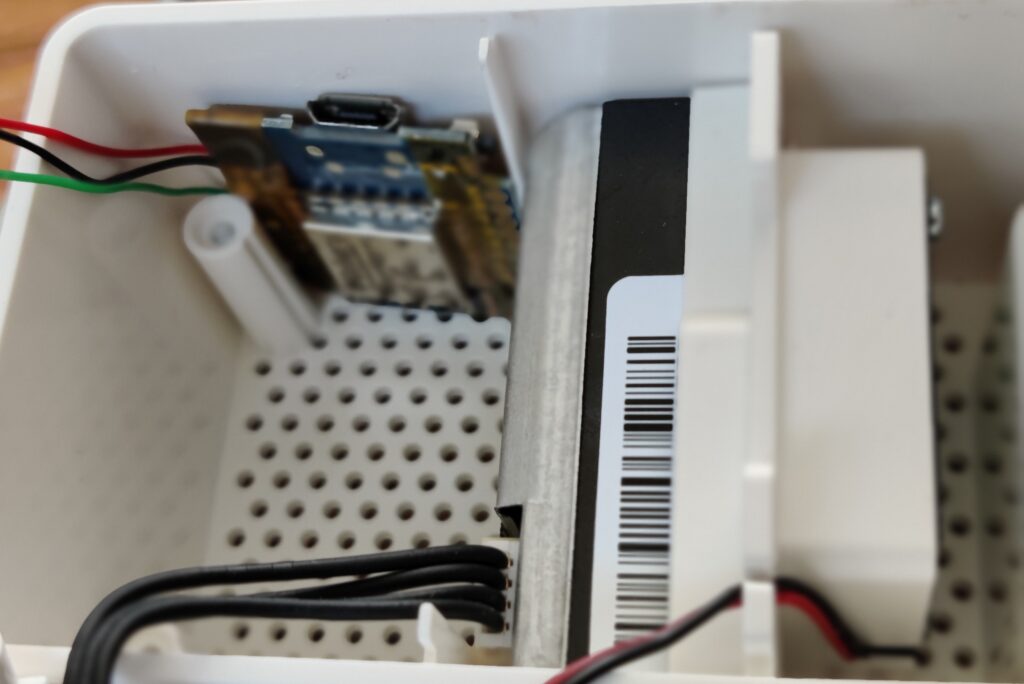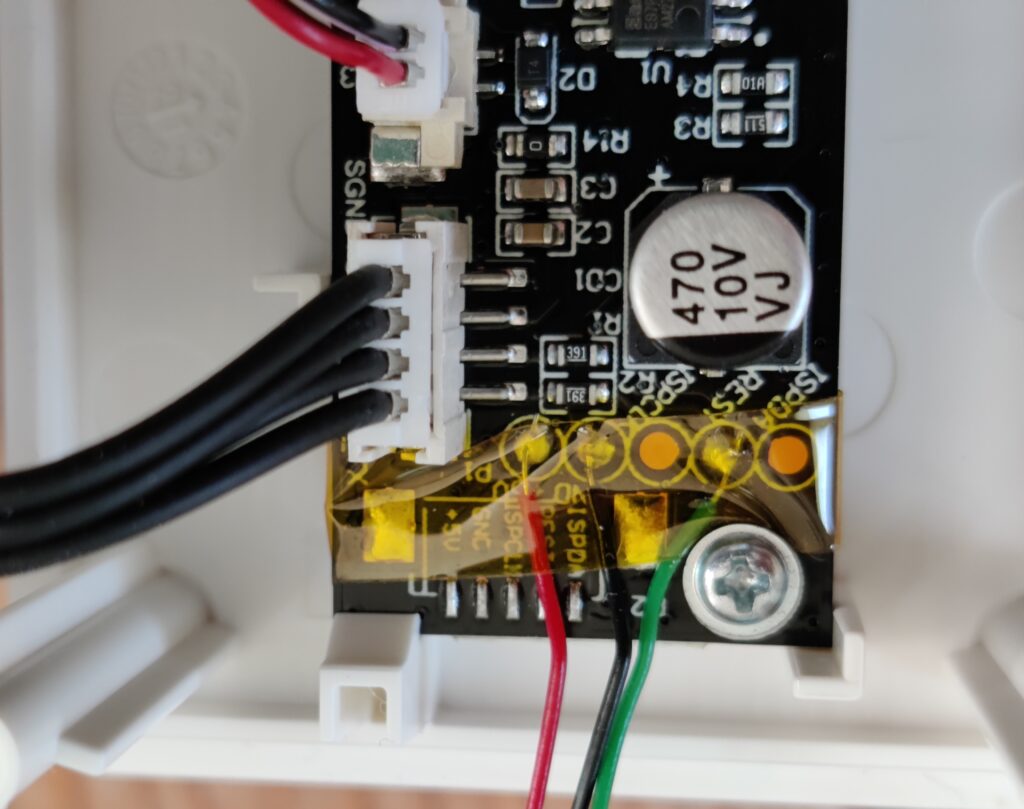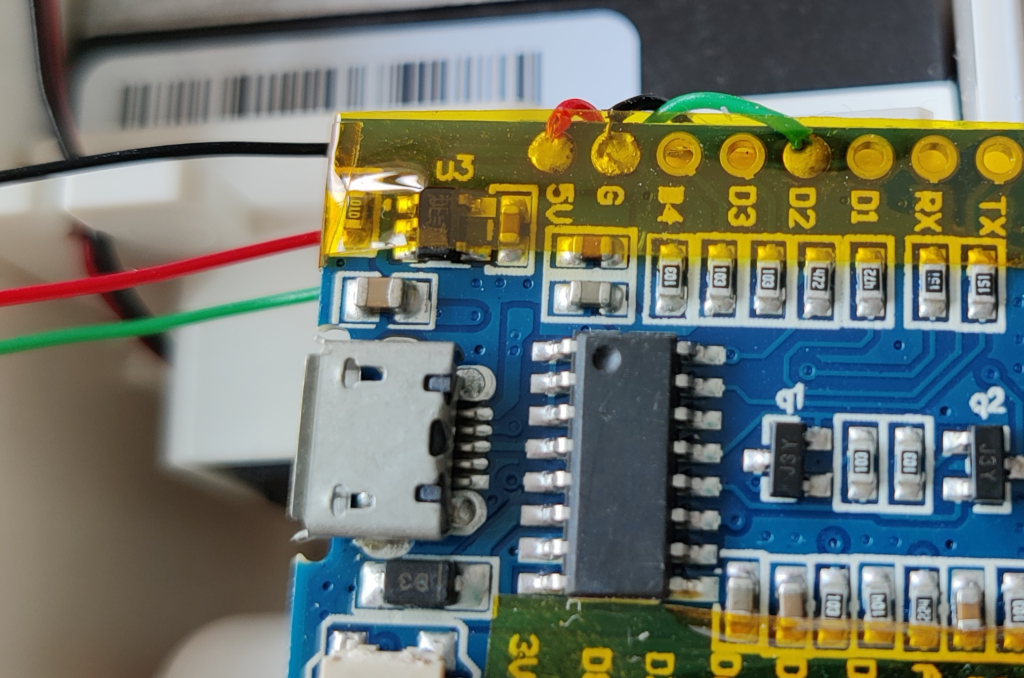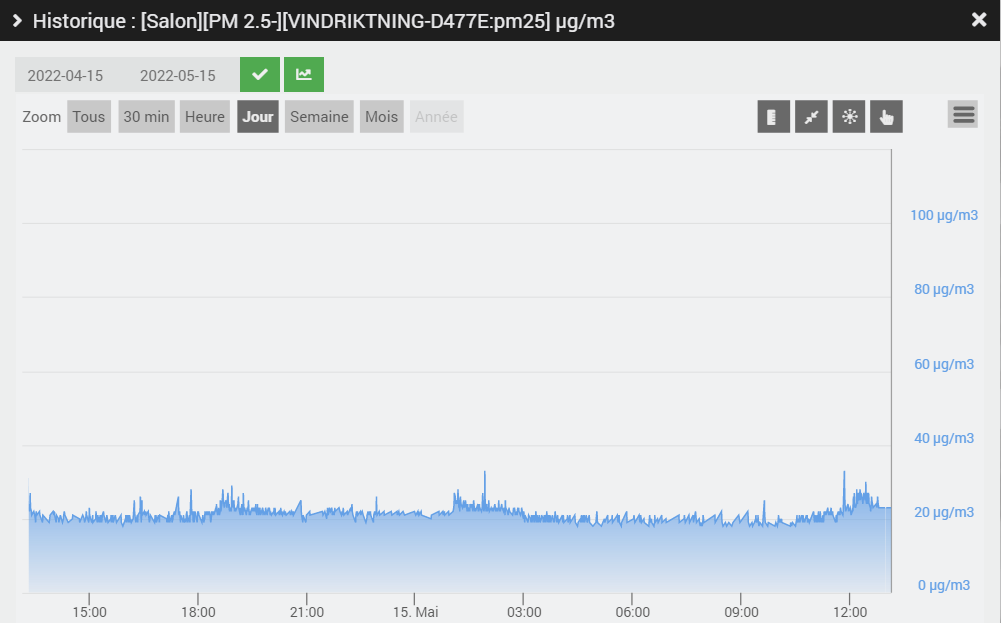I discovered the twitter post from @haxfleisch which showed a PM 2.5 air quality sensor sold by Ikea. The term PM 2.5 corresponds to the concentration of fine particles with a diameter of less than 2.5 µg in 1 cubic meter.
Ikea describes the product as follows :
This sensor checks the air quality by detecting particles (PM2.5) in your home..
Source : https://www.ikea.com/fr/fr/p/vindriktning-capteur-qualite-de-lair-70498242/
This sensor is composed of the following elements:
- a housing
- a circuit with an ES7P001FGS microcontroller from Eastsoft Microelectronics allowing:
- manage power supply (5v – 0.1A)
- control the two LEDs by color (green, orange, red) to display air quality
- recovery of sensor data (via a UART link)
- fan management
- managing the power of the LEDs via an ambient light sensor
- a CC3010 axial fan from WSD
- a PM 2.5 Model PM1006K sensor from Cubic (datasheet – source)
Reliability of information
According to an AirGradient study, implementing a fan in the case is a good thing to make the measurement easier and more reliable.
The optoelectronic sensor can display particle concentration in the air by detecting the intensity of reflected light. Unlike others that use a laser system.
The reliability of the PM1006K sensor is: ±20μg/m³ or ±20% of the reading
The reliability of a laser sensor like the Plantower PMS5003 is: ±10μ g/m³ @0~100μ g/m³ or ±10% @100~500μ g/m³
Legitimacy of the information reported by the LEDs
In terms of visual information from the box, the latter indicates the air quality in terms of PM 2.5 concentration according to the following scale:
- Green: 0 to 35 µg/m³ => Good + Low
- Orange: 36 to 85 µg/m³ => OK + Average
- Red: 86 µg/m³ and more => Bad + High
The World Health Organization indicates that the limits in terms of PM 2.5 to which we are exposed should be limited to (Source):
- 5 μg/m3 annual average value
- 15 μg/m3 average value over 24 hours
The European Union, for its part, defines the annual average value not to be exceeded at 20 µg/m³ (source).
In the United States of America, the limit indicated by the AQI index (Air Quality Index), indicates a maximum value over 24 hours of 12µg/m³ (source – page 4)
So according to the limits indicated by the WHO, the EU and the United States of America, the visual rendered by the sensor seems unrealistic in terms of legitimacy of the information.
How to provide reliable information?
Like other people, I decided to take the data directly from the circuit to inject it into my home automation. For this, I ordered an ESP8266-12F card which supports wifi, 9 pins digital in/out, PWM, I2C, 1wire and 1 pin analog input.
The advantage of this card is its ratio of features to its size. In fact, it is 34.5mm long, 25.4mm wide and 7mm deep. Thus, it can be perfectly integrated into the circuit as follows:

In terms of connections, solder three wires on the motherboard of the case to 3 locations on the ESP8266-12F card as follows:

Red wire being the 5V, black to ground, and green to data.

On the ESP8266-12F card, you will wire the red to 5V, ground to G, and data to D2.
In terms of data interpretation, it’s quite simple. The data is sent to pin D2 of the ESP8266-12F card in serial mode and in clear text.
If you don’t feel like coding something from scratch like me, you can use Sören Beye’s code available on his github repo.
Next step
Now I have the data stored in my home automation:

Next, what are the things you can do? Well here are some ideas:
- Send an SMS alert, Telegram
- Start any ventilation (forced VMC for example)
- Start an air purifier
The advantage of having data is that you can initiate actions and monitor the impact your actions have. With a LED display, it’s difficult to launch actions and really see the impact you could have.
Do not hesitate to comment on ideas for developments and actions that you could launch with such a system.
The following table gives you links to the hardware used in this post :
| Amazon US | Amazon France | |
| ESP8266-12F | https://amzn.to/46WPkI3 | https://amzn.to/3FTLLGz |
Sources :
- https://twitter.com/haxfleisch/status/1413891009843539968
- https://www.ikea.com/fr/fr/p/vindriktning-capteur-qualite-de-lair-70498242/
- https://github.com/Hypfer/esp8266-vindriktning-particle-sensor
- https://www.airgradient.com/resources/ikea-vindriktning-accuracy
- https://home-assistant-guide.com/2021/07/20/ikea-makes-an-air-quality-monitor-and-it-has-already-been-hacked/
- https://seetheair.org/2021/11/08/review-ikea-vindriktning-air-quality-monitor/
- https://en.gassensor.com.cn/Product_files/Specifications/LED%20Particle%20Sensor%20PM1006K%20Specification.pdf
- http://www.wsd189.com/Products/3010zhiliuzhouliufengsha.html
- https://www.who.int/fr/news-room/fact-sheets/detail/ambient-(outdoor)-air-quality-and-health